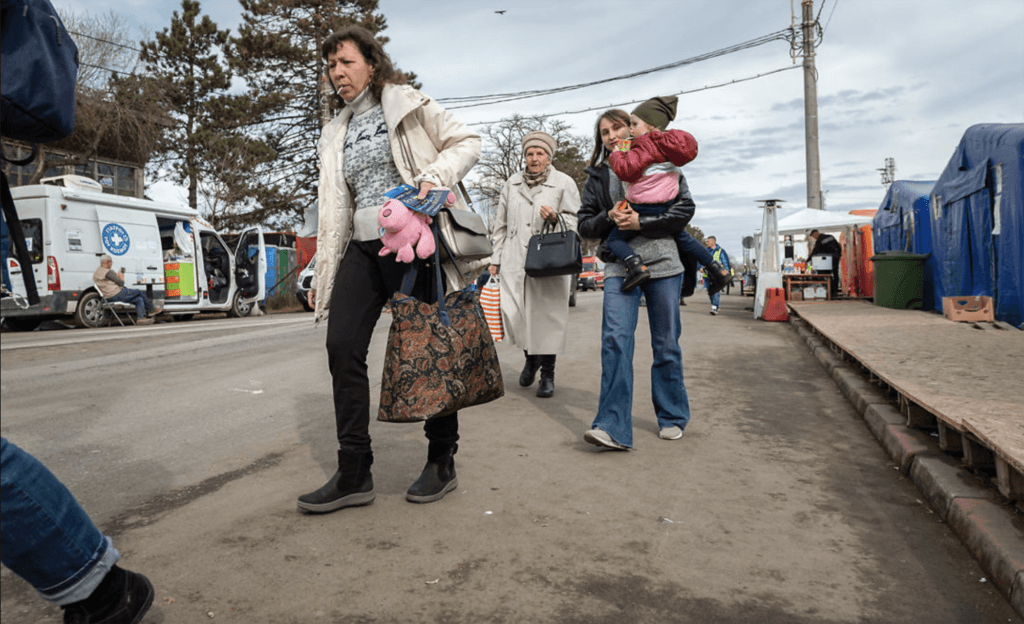
Friday was the 100th day of the Russian invasion of Ukraine. Although there has been an ongoing war since 2014, the conflict escalated significantly with the Russian invasion on Feb. 24. Here is an update on recent developments in the war.
Russia currently controls 20 percent of Ukraine territory
In a recent address to the parliament of Luxembourg, Ukrainian President Volodymyr Zelensky said that Russia now controls about 20 percent of his country’s territory (between 2014 and 2022, Russian had controlled about 7 percent of the country). The total square miles captured by the invading army – 48,260 sq miles – is larger than Belgium, Luxembourg and the Netherlands combined.
Claims of torture in Russian-occupied territories
The BBC has documented numerous allegations of civilians being tortured by Russians in the region of Kherson. The claims include rape, electrocution, beatings, strangulation and burning – including people’s hands, feet and genitals. A doctor who claims to have treated such injuries says, “They were tortured if they did not want to go over to the Russian side, for being at rallies, for being in the territorial defence, for the fact that one of the family members fought against the separatists, some got there randomly.”
Overall, Ukraine claims that around 15,000 suspected war crimes have been reported since the war began, with 200-300 more reported daily.
Western nations continue to arm the Ukrainians
The U.S. recently agreed to send a new weapons package that would include four M142 High Mobility Artillery Rocket Systems (HIMARS). The HIMARS can launch multiple precision-guided missiles at targets as far as 45 miles away, which far exceeds the current reach of Ukrainian artillery. The arms from the U.S. will also include helicopters, anti-tank weapons, tactical vehicles, and spare parts. Germany has also agreed to send Ukraine new rocket launchers, along with a tracking radar, which is capable of detecting enemy howitzers, mortars and rocket artillery. The EU foreign policy chief has also said, “The flow of arms going to Ukraine continues at a high pace. We can increase this – everything can be increased – but I don’t see any problem with the supply of arms to Ukraine.”
Russia sets its sights on the Donbas region
Early in the invasion, Russia attempted to capture the capital Kyiv and second city Kharkiv. The Ukrainians thwarted that plan and have forced the Russians to look for a military victory in the eastern region known as Donbas. Russia is now in control of around 70 percent of the key eastern city of Severodonetsk, according to the governor of Luhansk, one of two areas that make up the Donbas. It’s unclear what the Kremlin sees as its objective in expanding Russian presence in that territory. As Russia studies analyst Michael Kofman says, “In my view it is too early to make predictions on how the battle for the Donbas will go. Ukraine may lose territory in the short term, but Russia faces major problems with sustaining its military effort in the long term, or holding onto gains. The war could become protracted.”
The death toll increases on both sides of the conflict
The Ukrainian government claims that 30,000 Russian soldiers have been killed since the invasion began in February. This total would be more than overall Soviet casualties during the war in Afghanistan in 1979-89, and the two Chechen wars in 1994-2000. Russia has given details on only about 1,300 deaths in Ukraine, but an investigative news outlet collected open-source data to identify and verify the deaths of 3,043 Russian servicemen, using social media, news reports, or confirmation by relatives. British intelligence puts the number of dead Russian troops closer to 15,000.
Ukraine has not shared its own military casualty information, but in April, Zelensky told CNN about 2,500 to 3,000 soldiers have been killed. Additionally, the United Nations estimates that more than 4,000 Ukrainian civilians have been killed during Russia’s invasion of the country, though it says the real number is likely to be “thousands higher.”
The temptation to forget about our neighbors across the world becomes stronger as time passes and other tragic events happen on a seemingly daily basis. And though we cannot bear every burden that we hear about, we can cry out to the One who can on behalf of those thrust in the midst of war. Let’s pray that the light of Christ would bring hope and help through His people, His Word and His mercy in the midst of darkness.

















